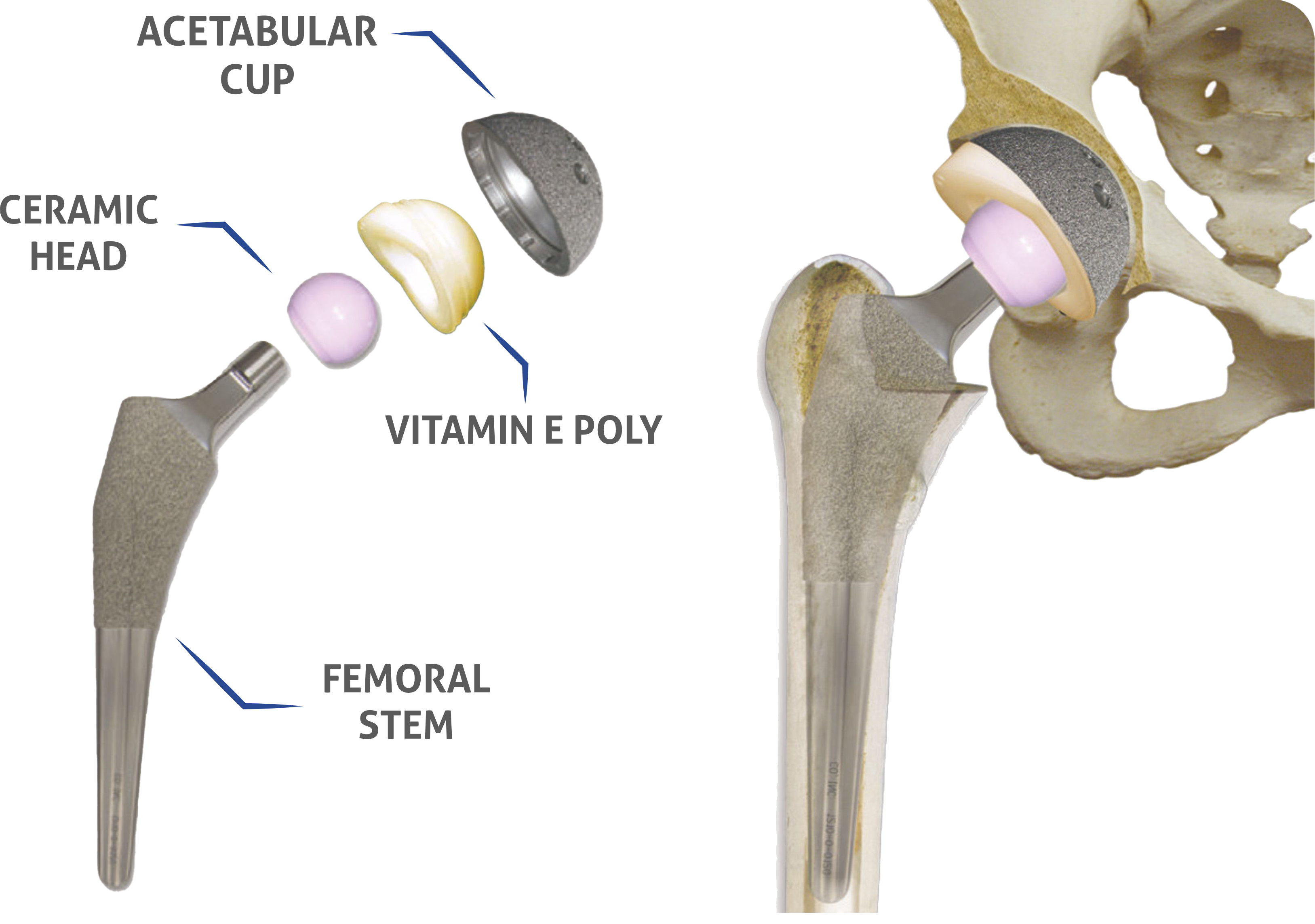What is Total Hip Replacement?
The hip is one of the body's largest joints. The hip joint is like a ball and socket joint. The ball is formed by the top of the thigh bone (femur) and the socket is formed by some part of the pelvis. Usually, the surfaces of the bones are covered with a smooth cushion-like coating (cartilage). A thin tissue called the synovial membrane surrounds the hip joint. In a healthy hip, this membrane makes a small amount of fluid that lubricates the cartilage and eliminates almost all friction during hip movement and the bands of tissue called ligaments (the hip capsule) connect the ball to the socket and provide stability to the joint. Over time, the cartilage can wear away, causing pain, stiffness, and discomfort in moving. The solution is Hip Replacement or Hip Arthroplasty, which is a surgical procedure where the worn-out surfaces of the hip are replaced with a prosthesis. Hip replacement can relieve or eliminate pain, improve mobility, and help you regain your joyful life

Are you the right Candidate?
- Hip pain that interferes with daily activities like walking, sleeping, Sitting or bending.
- Persistent hip pain even while resting.
- Hip stiffness that restricts movement or makes lifting the leg difficult.
- No improvement in pain despite using anti-inflammatory medications, physical therapy, or walking supports.

Procedure:
In a total hip replacement, the damaged bone and cartilage in the hip joint are replaced with artificial components:
- The damaged femoral head is removed and replaced with a metal stem inserted into the center of the femur.
- A metal or ceramic ball is attached to the top of the stem, replacing the damaged femoral head.
- The cartilage surface of the socket (acetabulum) is removed and replaced with a metal socket, which may be secured using screws or cement.
- A spacer made of plastic, ceramic, or metal is placed between the new ball and socket, creating a smooth, gliding surface for movement.
Recovery :
Your hospital stay typically lasts 1 to 2 days, depending on how quickly you recover.
- Surgery Success: Following your surgeon's instructions during the first few weeks is crucial for recovery. If discharged to a rehabilitation unit or skilled nursing facility, staff will manage your care.
- Diet: It's normal to have a reduced appetite for a few weeks after surgery. Eat a balanced diet to support healing and muscle strength, and stay hydrated by drinking plenty of fluids.
- Activity: Exercise is essential for recovery, especially in the first few weeks. Most light daily activities can be resumed within 3 to 6 weeks. Some discomfort during activity and at night is normal for a few weeks.
Downloads
Why Shalby MedTech
We are committed to deliver solutions and transforming the way joint replacement procedures are performed.
 Reliability
Reliability
 Integrity
Integrity
 Teamwork
Teamwork

 Looking for the
Looking for the  Register as
Register as